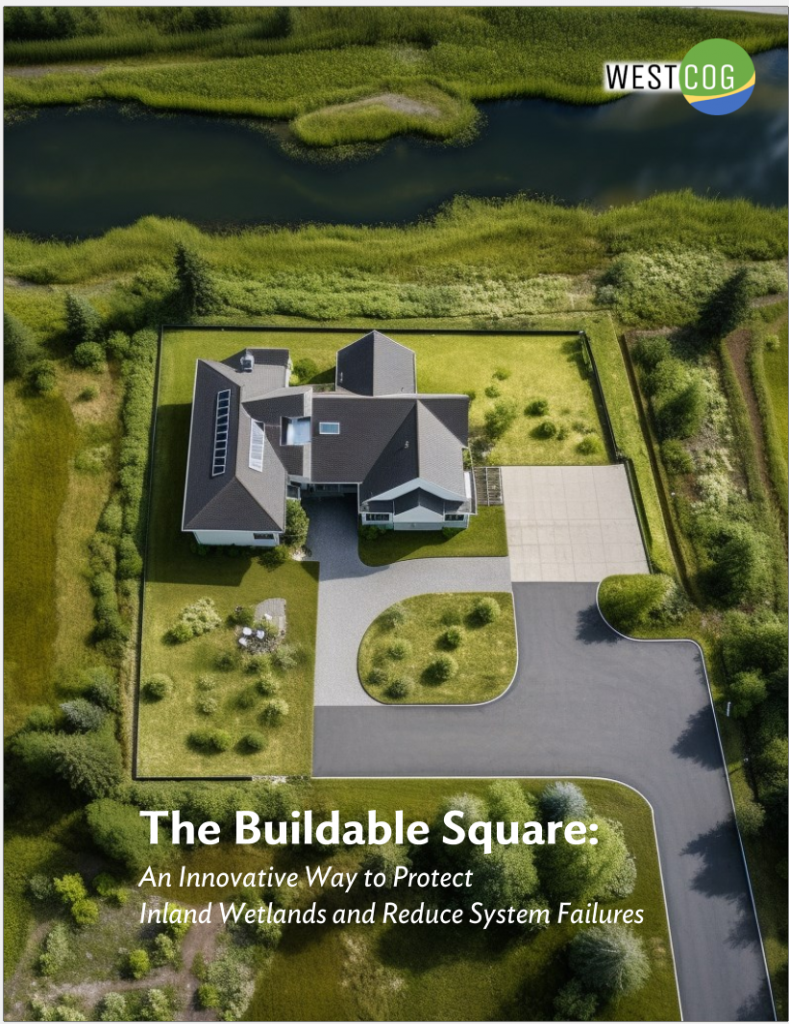Zoning Strategies. The Buildable Square
The Buildable Square – An Innovative Way to Protect Inland Wetlands and Reduce Septic System Failures is a zoning strategies report that provides descriptions, best practices, and additional options for the Buildable Square zoning strategy. This report also demonstrates how Connecticut’s zoning commissions have begun to play an important role in protecting wetlands – and in some respects may have a greater impact in protecting wetlands than the state’s inland wetlands commissions. In 1972, Connecticut authorized municipalities to establish inland wetland agencies to protect the rivers, watercourses, and inland wetlands throughout the state. The last fifty years have demonstrated that this legislation has done some good. But it has also revealed the degree to which wetlands have been consistently filled over time due to the pressures for development. The protection of wetlands through zoning has become more apparent with the adoption of buildable lot standards that exclude wetlands from the entire lot or from what is called a “buildable square” (MBS) or “buildable rectangle” (MBR) that must fit within a building lot and be totally free of wetlands. If the concept is recognized for its environmental, waste and drinking water planning, and lot design values, it could revolutionize inland wetlands protection. This study analyzes MBS and MBR practices in Connecticut and explains how their broader adoption could improve wetlands protections and, simultaneously, improve the predictability of the land development process. This study also reveals how the MBS or MBR concepts could effectively replace traditional minimum lot size requirements with a performance-based approach that ensures adequate land for siting homes, septic systems, and wells, while meeting traditional setback standards. The report also identifies a range of zoning and outreach strategies to implement the MBS/MBR concepts and spread them across Connecticut.



